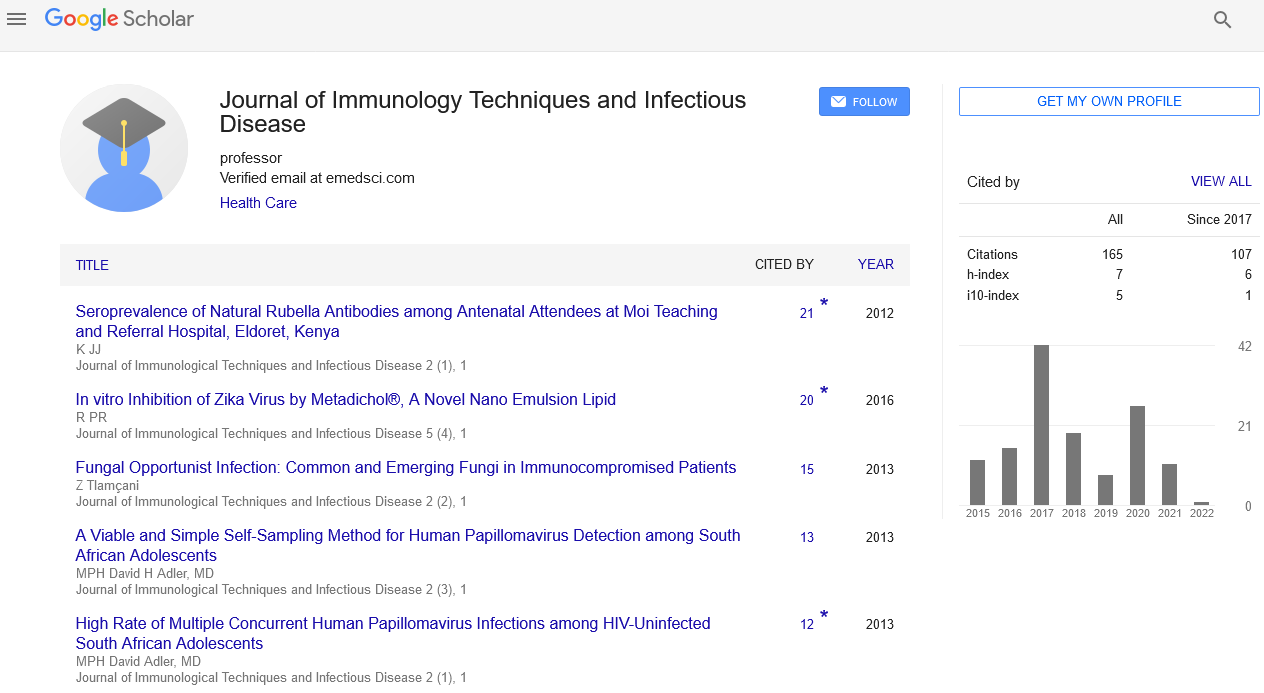Editorial, J Immunol Tech Infect Dis Vol: 10 Issue: 6
Donax trunculus (Bivalvia, Donacidae) Infestation with Bacciger bacciger (Trematoda, Fellodistomidae) at Port Said coastal zone (Mediterranean Sea)
Abstract
Infection of Bacciger bacciger in the Donax trunculus was studied in samples collected from the Mediterranean coast at Port Said coastal zone. Sporocysts of Bacciger bacciger were embedded in gonadal tissue of the bivalve Donax trunculus. Sporocysts of B. bacciger were demonstrated in 504 of 1200 clams examined with overall prevalence of infection reaching 73.69%. The prevalence increased to 24% of D. trunculus with shell length 34 mm, while individuals less than 15 mm shell length were not infested with B. bacciger. Seasonality was recognized in prevalence of infection. The proportion of infected individuals of both sexes was nearly similar (6.56% in males and 8.04 % in females). The proportion of infected clams reduced to virtual castrates of unknown sex reached 28%. The tegument of the sporocyst and cercariae were studied by light microscopy. A birth pore on one side of the sporocyst, uniciliate sensory organs and cup-shaped sensory-like structures were present on the tegument. The cercarial body had spines and uniciliate sensory organs. The ventral sucker of the cercariae had 2 rings of uniciliate sensory organs and supported with tegumental spines. Histopathological effect of Bacciger bacciger on Donax trunculus was studied and discussed. Results revealed that the most common sites of the sporocyst occurrence were the interfollecular connective tissues in the gonads and muscle fibers of the foot. Degenerative follicles hypertrophy and hyperplastic changes of the connective tissues, granular haemocytes and separation between germ cells and follicular epithelium were the main histological features of the infection in the male D. trunculus gonad. While, vacuolization, necrosis and derangement of muscle fibers of foot were the most histological features observed in infected feet by sporocyst. The Siphonal tissue of infected Donax was free of sporocysts. The increase in goblet cells and movement of subepithellial mucous glands towards the outer surface were indications of defense against B. bacciger infection. The present results indicated that B. bacciger promotes a severe castration in the bivalve Donax trunculus. Wedge clams Donax trunculus inhabit high-energy environments along sandy coasts of the northeastern Atlantic Ocean and the Mediterranean Sea. Two sites were sampled monthly, one in Morocco (Mehdia), where the density was normal, and one in France (Biscarosse), where the density was very low. We tested the hypothesis that the difference in density between the sites was related to infection by the trematode parasite Bacciger bacciger. Identity of both the parasite and the host were verified using anatomical and molecular criteria. Parasite prevalence (i.e. the percentage of parasitized clams) was almost 3 times higher at Biscarosse. At this site, overall prevalence reached 32% in July and was correlated with the migration of several individuals (with a prevalence of 88%) to the sediment surface. After this peak, prevalence decreased rapidly, suggesting death of parasitized clams. The deleterious effect of B. bacciger on wedge clams was also supported by our calculations indicating that the weight of the parasite made up to 56% of the total weight of the parasitized clams. However, condition indices of trematode-free clams were also lower in Biscarosse than in Mehdia or other sites, suggesting that other factors such as pollutants or microparasites (Microcytos sp.) may alter wedge clam population fitness in Biscarosse.
Keywords: Donax trunculus
 Spanish
Spanish  Chinese
Chinese  Russian
Russian  German
German  French
French  Japanese
Japanese  Portuguese
Portuguese  Hindi
Hindi 
